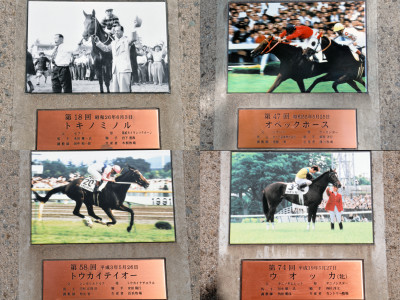The source of the strength of the Kansai group, I have visited the slope course of the Kurito Training Center

The racehorses of Central Horse Racing are trained for racing at the Miura Training Center in Ibaraki Prefecture or at the stables of the Ritto Training Center in Shika Prefecture, but in recent years horses (Kansai horses) trained at Ritto I overwhelm a horse trained in Miura (Kanto horse). The most important factor behind this is the slope course at Kurito Toresen.
In contrast to Miura Tresen, which is built on a flat land, Kurito is undulating throughout the site, and the slope course is steeper in angle than Miura's, and is believed to help enhance the cardiorespiratory function of horses. You After seeing the appearance of each horse scheduled to enter
I found a derby horse, San Diego city, at the racetrack (place used for the preparatory movement) on the way to the slope stand.


In addition, on the Sakaji Course's Sakai Harukamado (walking path to relax the horse), there is also a figure of

The inside of the slope stand is like this. You can see the slope course straight in front of you, and the other side of the course you have just visited in the far right.

The slope course is in the form of coming up from the back to the front of the photo. Something like a green camera is attached on the course, but this is a device that reads the bar code attached to the horse number which comes up and measures the time of the horse.

Like this, the number has a barcode.
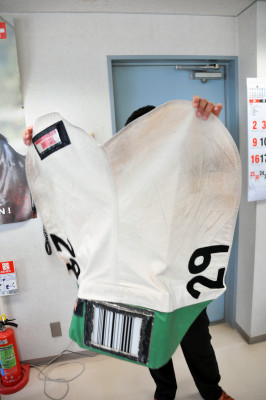
The camera on the right side of the monitor captures the 600m, 400m, and 200m points to the goal on the slope, and the running time is displayed. Reporters in the sports newspaper take note of these numbers and use them in articles.

There were horses just coming up the course.
Horses who walk along Sakai Harukamado towards the Sakaji Course entrance.
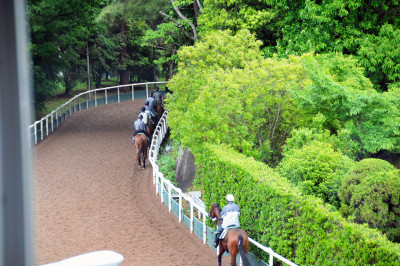

The relationship between the racetrack and Kuramado looks like this.

Horses have increased on the track. It will be that there are many horses that challenge the training on slopes from now on.

This is the side that went up the slope course.

I just saw the figure of Danon Shanty who finished the slope course.

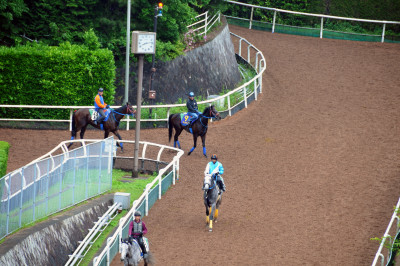


After that

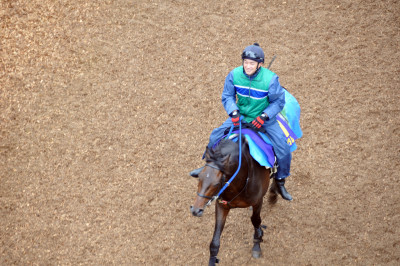
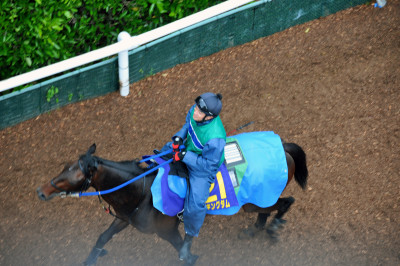
Then there was a horse that was not riding a jockey. Apparently there was a dropped horse on the way.

Horses weighing about 400 kg to 500 kg run at about 60 km per hour, which is very dangerous if you hit another horse. Soon I was caught on the slope.
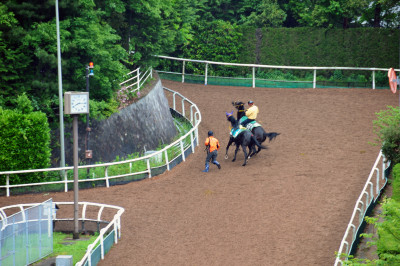
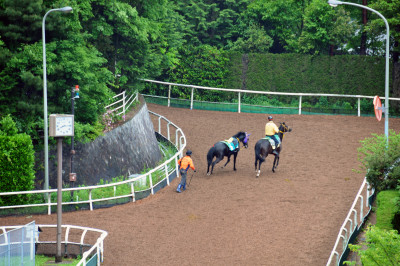

By the way, jockeys wear such protectors. The horse's kicking power is strong, and some trainers and training assistants have been kicked and killed. It looks calm, but it is dangerous.

When I saw the track again, a camera for coverage was coming. It looks like we were shooting that scene after Danon Shanty and others had finished running.

Once again, looking at the truck, people gather at the gate.
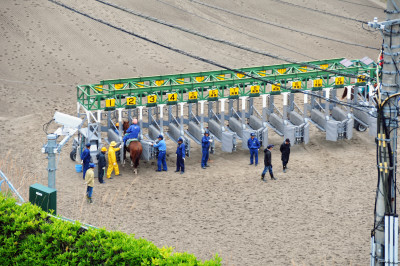
This is a gate test. The racehorse jumps out of this gate at the time of the race, but since horses are originally timid, such narrow places are not good. Therefore, in this way it is tested that you can really get out of the gate at the time of the race, and it is a system that you can not run without passing. By the way, from the first to the fourth of the gate is for the test (for production), from the fifth there is silence (no sound when the gate opens) for practice, and the place where the number is larger is the production The gate is wider than the ones.

The tests that were being conducted at this time seemed to be smooth.
As there are few people who fall in the driver's license test, most horses get gate test too ... that's not the case. A horse named Lager Legrus was once the third most popular in the Hogetsu Prize, but he ran wild in the gate and shook the jockey, and the race was canceled. Since the betting ticket was effective at this time, about ¥ 5.6 billion is instantly added to par. Later, Lager Legurus was to take the gate test again, but the crowd went on at lunch break at Tokyo Racecourse, and there were people who made loud noises and made umbrellas. , Lager Regulus got up in the gate, and there was an episode that the exam failed ....
You can see a mountain of such wood chips on the way to the slope course. This is a heap of stock, as the chips placed on the course need to be replaced, of course.

I left the slope course and came to another stand (right-handed stand). A joint press conference was held here for Derby.

The stand here was just before the goal, and many trainers and horse racing reporters were packed.
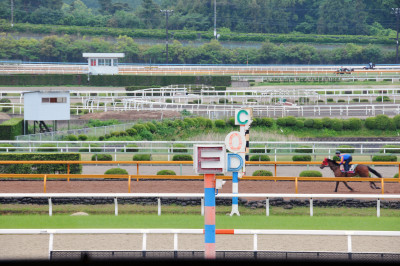
It should be a document that there are various types of horseshoes, but I had all somehow paid out, although it was strictly prohibited.
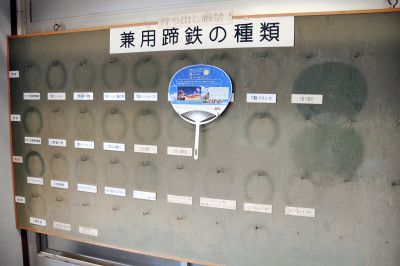
I went outside because the press conference seemed to be delayed a little.

I found Iwata Yasumasa jockey and the

This is

Although it was a jockey, it was a helmet of silver (white) instead of blue, but this is a proof of the Baba preservation committee.

Tetsusan

After that,

It is going away on horseback



It is a back view but Mr.

This blue roofed building weighs its horses and weighing stations. Horse Weight One of the important factors in knowing the condition of a horse.

The last is a visit to Shirai Shoshosha. There are very few opportunities for the general public to enter the stables, but what is the situation in the stables?
・ Continuing
Visiting the stables of Akira Shirai, a master's degree graduate student

Related Posts:






